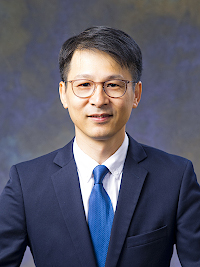Prof. Chi Keung Alvin LAI
Education
BEng(Hons), MPhil, PhD Imperial
Staff title
Professor
Prof. Alvin Lai received his bachelor B. Eng. in Building Services Engineering from Hong Kong Polytechnic University and his MPhil. from Hong Kong University. He obtained his Ph.D. from Imperial College. He spent three years working as a post-doctorate fellow in University of California, Berkeley before joining Nanyang Technology University, Singapore in December 2000. He is a Associate Professor of Department of Architecture and Civil Engineering since February, 2007. His main research areas are air quality with the emphasis on airborne particles, exposure, aerosol science and technology and filtration technology.
Other Information
Research Interests
- Indoor Air Quality
- Airborne Pathogen Control
- Innovative Method for Disinfection
- Engineering Control for Indoor Air Pollutants
- Environmental Health
Selected Publications
- LAI CKA and CHEN J (2015), Numerical study of cooking particle coagulation by using an Eulerian Model, Building and Environment, 89: 38-47.
- DING L and LAI CKA (2013), Lattice Boltzmann method for numerical study of indoor airflow and particle dispersion, Journal of Aerosol Science, 63: 10-24.
- LI M and LAI CKA (2013), Analytical solution to heat conduction in finite hollow composite cylinders with a general boundary condition, International Journal of Heat and Mass Transfer, 60: 549-556.
- LI M and LAI CKA (2013), Analytical solution to heat conduction in finite hollow composite cylinders with a general boundary condition, International Journal of Heat and Mass Transfer, 60: 549-556.
- LAI CKA, FUNG JLS, LI M and LEUNG KY (2012), Penetration of fine particles through rough cracks, Atmospheric Environment, 60: 436-443.
- LAI CKA, POON CKM and CHEUNG ACT (2012), Effectiveness of facemask to reduce exposure hazards for airborne infections among general populations, Journal of The Royal Society Interface, 9: 938-948.
- YANG Y, CHAN WY, WU CL, KONG R and LAI CKA (2012), Minimizing the exposure of airborne pathogens by upper-room ultraviolet germicidal irradiation: an experimental and numerical study, Journal of The Royal Society Interface, 9: 3184-3195.
- POON CKM and LAI CKA (2011), An experimental study quantifying pulmonary ventilation on inhalation of aerosol under steady and episodic emission, Journal of Hazardous Materials, 192: 1299-1306.
- WU CL, YANG Y, WONG SL and LAI CKA (2011), A new mathematical model for prediction irradiance field of upper-room ultraviolet germicidal systems, Journal of Hazardous Materials, 189: 173-185.
- WONG LT, CHAN WY, MUI KW and LAI CKA (2010), An experimental and numerical study on deposition of bioaerosols in a scaled chamber, Aerosol Science and Technology, 44: 117-128.
- LAI CKA, MUI KW, WONG LT and LAW LY (2009), An evaluation model for indoor environmental quality (IEQ) acceptance in residential buildings, Energy and Buildings, 41: 930-936.
- LAI CKA and Chen F (2007), Modeling of particle deposition and distribution in a chamber with a two-equation Reynolds-averaged Navier-Stokes model, Journal of Aerosol Science, 37: 1770-1780.
- Chen F, Yu SCM and LAI CKA (2006), Modeling particle distribution and deposition in indoor environments with a new drift-flux model, Atmospheric Environment, 40: 357-367.
- LAI CKA (2005), Modeling of indoor coarse particle deposition onto smooth and rough vertical surfaces, Atmospheric Environment, 39: 3823-3830.
- LAI CKA (2002), Particle deposition indoors: a review, Indoor Air, 12: 211-214.
- LAI CKA and Nazaroff WW (2000), Modeling indoor particle deposition from turbulent flow onto smooth surfaces, Journal of Aerosol Science, 31: 463-476.
Staff Image

Contact Information
| Office: | YEUNG-G5441 |
|---|---|
| Phone: | +(852)-3442-6299 |
| Fax: | +(852)-3442-0688 |
| Email: | alvinlai@cityu.edu.hk |
Research Interests
- Indoor Air Quality
- Airborne Pathogen Control
- Innovative Method for Disinfection
- Engineering Control for Indoor Air Pollutants
- Environmental Health